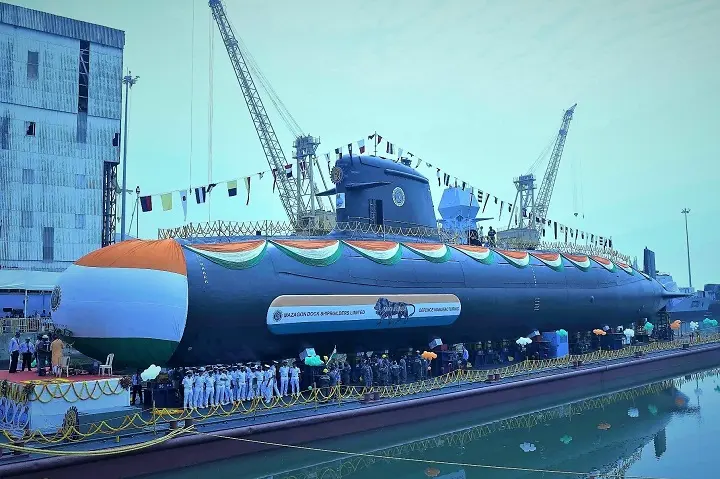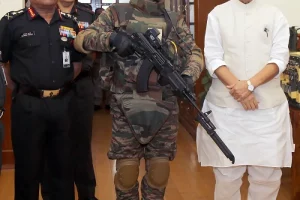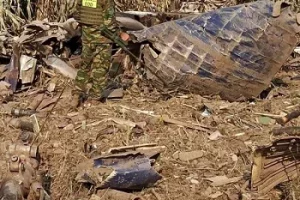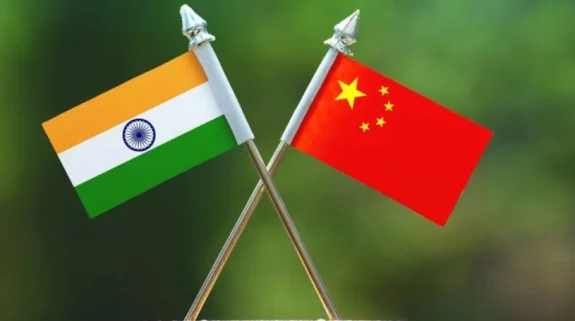World military expenditure touched an all-time high of $2.1 trillion in 2021, despite the coronavirus pandemic. Independent research institute Stockholm International Peace Research Institute (SIPRI), that monitors arms spending, says that the top three largest spenders were the US, China and India.
The institute says that this was the seventh consecutive year that global military spending increased. In data released on Monday, the institute says: "The five largest spenders in 2021 were the United States, China, India, the United Kingdom and Russia, together accounting for 62 per cent of expenditure".
Who were the top 10 military spenders in 2021?
1) USA
2) China
3) India
4) UK
5) Russia
6) France
7) Germany
8) Saudi Arabia
9) Japan
10) South KoreaTogether they spent $1578 billion, accounting for 75% of global military spending ➡️ https://t.co/9dsFAulApR pic.twitter.com/Axq6nd9DLU
— SIPRI (@SIPRIorg) April 25, 2022
Diego Lopes da Silva, Senior Researcher with SIPRI's Military Expenditure and Arms Production Programme said: "Even amid the economic fallout of the Covid-19 pandemic, world military spending hit record levels". The institute says that as a result of sharp economic recovery from the Covid-19 pandemic, defence spending amounted to 2.2 per cent of the global GDP, while in 2020 this figure had reached 2.3 per cent.
India focuses on its indigenous arms industry
Regarding India, it says that the country's military spending of $76.6 billion ranked third highest in the world, adding that: "This was up by 0.9 per cent from 2020 and by 33 per cent from 2012". The institute notes that India has begun to strengthen its indigenous arms industry with 64 per cent of capital outlays in its military budget of 2021 earmarked for purchases from local firms.
US spends on next-gen weapons
American military spending reached $801 billion in 2021 which is a drop of 1.4 per cent from 2020. SIPRI added that from 2012 to 2021, the US focused on increased funding for military research and development by 24 per cent and reduced spending on arms purchases by 6.4 per cent.
Alexandra Marksteiner, Researcher with SIPRI's Military Expenditure and Arms Production Programme, said: "The increase in R&D spending over the decade 2012-21 suggests that the United States is focusing more on next-generation technologies. The US Government has repeatedly stressed the need to preserve the US military's technological edge over strategic competitors".
From the Qing Dynasty in the 1870s to the #usa and #China in 2022.
Which are the top ten nations in the world with the largest armies?
1. China: 2,000,000
2. #India: 1,450,000
3. USA: 1,390,000
Video here: https://t.co/GfC5sv8rwR#Ukraine #UkraineRussiaWar #russia pic.twitter.com/4NKFIz64mS
— Statistics and data (@StatisticsD) April 19, 2022
Chinese aggression forces neighbours to hike arms purchases
In second place globally, China spent $293 billion on defence, marking an increase of 4.7 per cent compared with 2020. It noted that China's military spending has grown consecutively for 27 years, which is now pushing its neighbours to increase their defence purchases.
SIPRI said that China's growing assertiveness in and around the South and the East China seas have become a major driver of military spending in countries such as Australia and Japan. Senior Researcher Nan Tian said: "An example is the AUKUS trilateral security agreement between Australia, the United Kingdom and the United States that foresees the supply of eight nuclear-powered submarines to Australia at an estimated cost of up to $128 billion".
High oil and gas prices spurs Russian military spending
SIPRI noted that Russia too increased its military budget in the run-up to the Ukraine war. It says: "Russia increased its military expenditure by 2.9 per cent in 2021, to $65.9 billion, at a time when it was building up its forces along the Ukrainian border. This was the third consecutive year of growth and Russia's military spending reached 4.1 per cent of GDP in 2021".
The institute said that high oil and gas revenues helped Russia to hike its military spending. It says that between 2016 and 2019, due to low energy prices along with sanctions over the annexation of Crimea, Russian military expenditure had reduced.
Ukraine too hikes its military budget
The Russian build-up over the years also prompted Ukraine to strengthen its defences. Its military spending went up by 72 per cent after the annexation of Crimea in 2014. Despite the lower military budget in 2021, Ukraine still spent 3.2 per cent of the country's GDP on defence.
Other countries which increased their budgets include the UK, Japan and Australia. Even Iran pushed up its military budget for the first time in four years, says SIPRI.



























